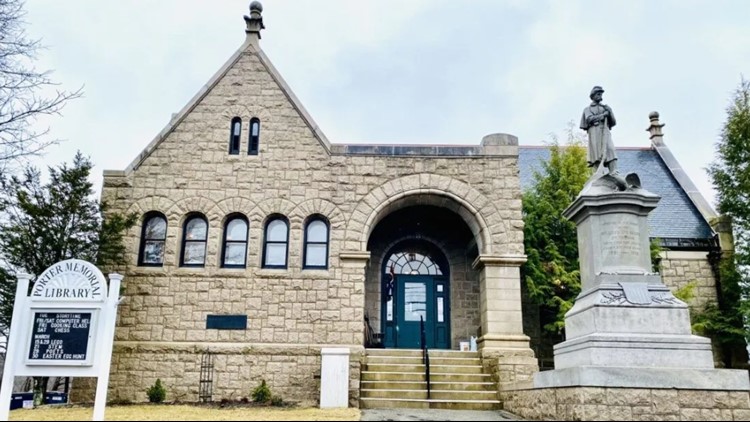WASHINGTON COUNTY, Maine — When Sharon Kiley Mack walked into a library for the first time as a little girl, she wept at the sight of so many books.
More than six decades later, Mack again found herself weeping at her local library in Machias. But this time it was because she couldn’t enter.
With severely arthritic hips, Mack couldn’t raise her legs high enough to mount the precipitous staircase — the only way to reach all those books.
Mack said it broke her heart.
“Anybody who knows me, knows I read a million books a year,” said Mack, a professional writer. She said she can check out e-books from the library online, “but it’s not the same as holding a book in your hand.”
The staircase that leads to the entrance of Porter Memorial Library — a 131-year-old building listed in the National Register of Historic Places — is a towering stack of seven granite blocks, each step taller than the maximum seven inches now stipulated by federal law.
The stairs pose a daunting obstacle for people with mobility issues in a town where more than a fifth of the residents are 65 or older.
That may soon change. The library was recently awarded $820,000 in federal funds to help make it fully accessible, bringing it into compliance with the American with Disabilities Act.
Porter Memorial Library is one of the five Maine libraries that received a chunk of the $6.1 million secured by Sen. Susan Collins through the 2024 appropriations bills earlier this month. The others include Millinocket Memorial Library, Orono Public Library, Jesup Memorial Library in Bar Harbor and Case Memorial Library in Kenduskeag; they plan to use the funds for ADA improvements and expansions.
Sarah Craighead Dedmon, the chair of Porter’s board, said the federal award covers 75 percent of the projected construction costs. The library will raise the rest of the estimated $1 million needed for construction through grants and donations. She noted that costs could change due to rising prices.
“But I’m optimistic that we’ll be able to break ground by 2026, if not sooner,” she said.

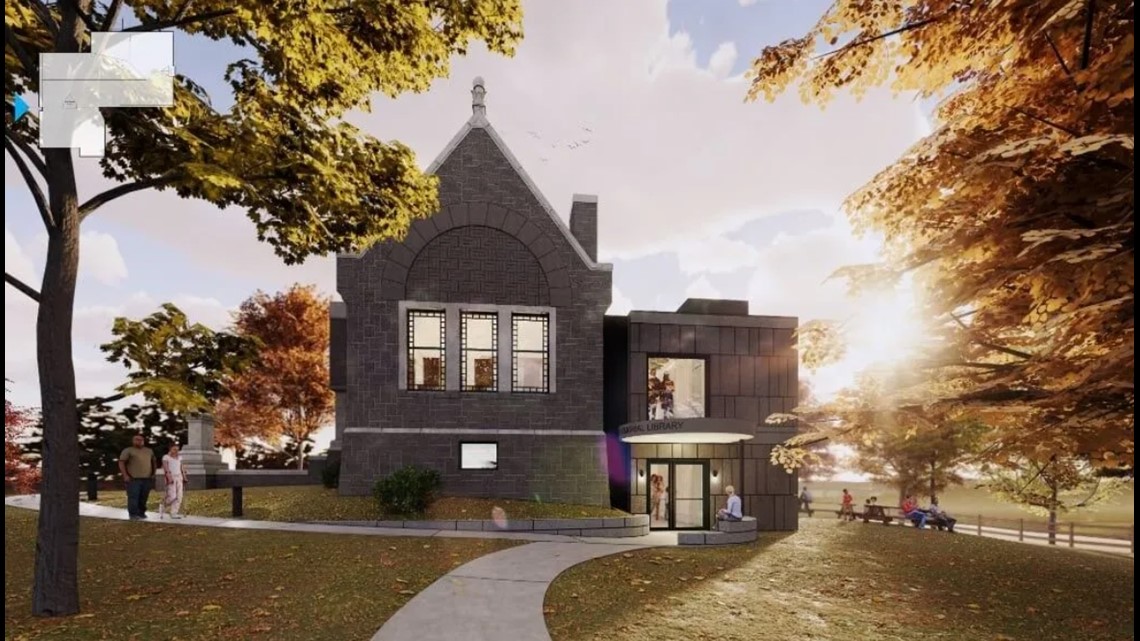
An earlier $60,000 REvitalizeME Gen 2 grant, from the Maine Downtown Center and the Maine Historic Preservation Commission, paid for the design.
The library plans a two-story addition that will sit at the rear of the building, virtually hidden from the street, and will have a ground-level entrance that leads to the children’s section and an elevator to take patrons to the main floor. The extension will also feature two accessible bathrooms.
Dedmon said alternatives like a ramp would have defaced the facade while leaving the basement level inaccessible.
“Those options lacked a very large measure of dignity,” Dedmon said. “They are loud and embarrassing, and draw attention to the people who need to get in.”
Room for everybody
Porter Library was built in the 1890s as a twin to the Buck Memorial Library in Bucksport, both designed by Boston architect George Clough. Constructed of local granite in the Romanesque Revival style, the building has soaring gable ends on three sides capped by pinnacles.
Porter’s main entrance — at the top of that foreboding staircase — is sheltered by a portico under a large round arch.
Inside, Porter Memorial holds history from the Revolutionary War. Ballast stones from the captured British warship Margaretta are embedded in the fireplace.
Porter Memorial is one of fifty places in Washington County designated by the National Register of Historic Places. At least eight of the county’s 17 libraries have the designation or sit within historic districts.
Porter Memorial Library, Buck Memorial Library, Calais Free Library and the Peavey Memorial Library in Eastport were all built in the Romanesque style, loosely described by renowned architectural historian Jon Calame as “democratic” architecture.

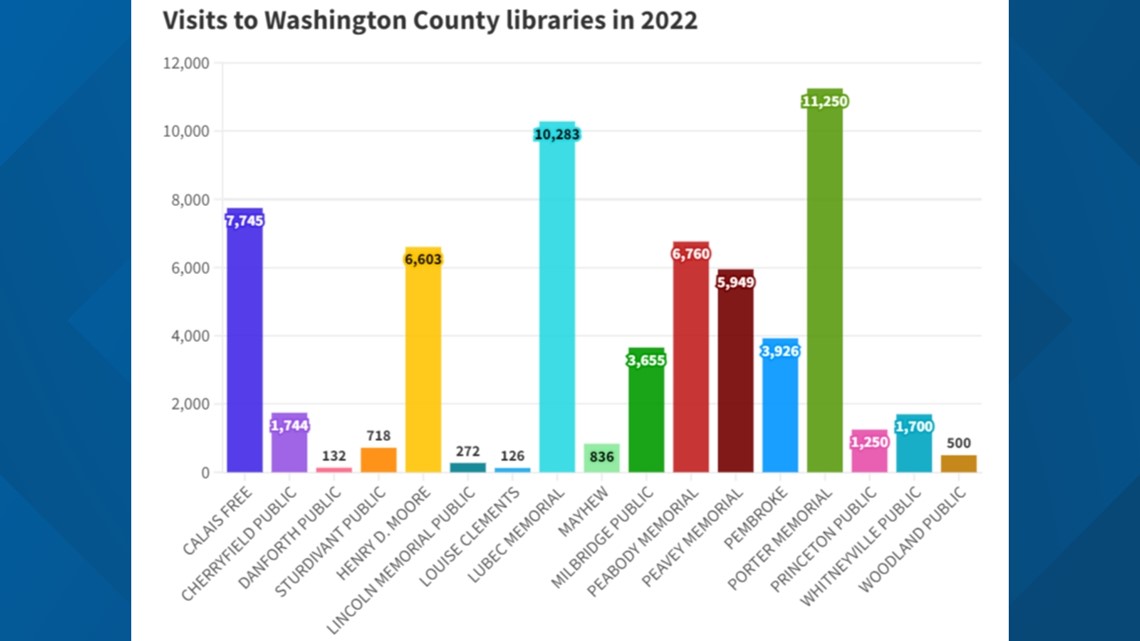
Calame has worked as a consultant during Peavey Library’s ongoing renovations. He said the broad, arching entrances seem to say there is room for everybody — no one will be excluded.
The buildings have features that are “welcoming, inclusive and suggestive of a localized absence of social hierarchy,” he said.
But they are also built with thick walls and intricate stonework that present obstacles. And Porter’s historic designation, granted in 1978, makes it challenging to modify. Any changes or additions must adhere to strict state and federal guidelines.
Portland architect John Turk, who specializes in historic preservation work and consults on the Porter Memorial project, said the building presents unique challenges. For example, he said the addition’s roof must connect with the building where a particularly gracious stone cornice is located.
“It’s beautiful stonework, but as part of getting the elevator to work and getting headroom clearance in the addition, there’s going to have to be some balance and compromise,” said Turk.
A growing revival
Machias is not the only Downeast community attempting to make its library accessible, or to expand its footprint to meet evolving needs.
A half-hour to the east in Dennysville, the circa 1900 Lincoln Memorial Public Library is Washington County’s smallest, with 6,385 collections packed into a mere 875 square feet. The NRHP-designated library serves Dennysville, Pembroke, Edmunds, Marion and Cathance townships. An all-volunteer staff manages the collection with under $7,000 a year.

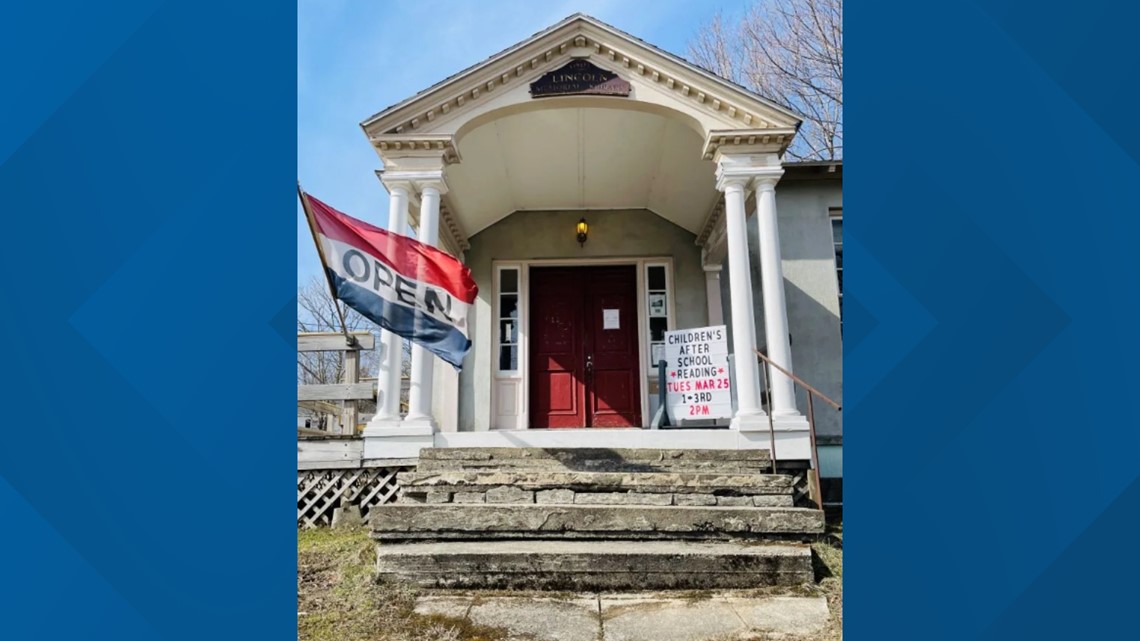
“It’s a lovely room and it has character. But you know, we’ve had to struggle even to put in electrical outlets,” said library director Colin Windhorst, who is also the town historian and an assistant pastor at the Congressional church next door.
Windhorst has faith that things can change. In the past 15 years, in addition to town support, the library has received cash infusions from the USDA and charitable groups, including a grant from the Stephen and Tabitha King Foundation that financed the restoration of the library’s windows and Colonial Revival porch.
Last summer, a representative from Collins’ office paid the tiny library a visit, examining architectural plans drawn up in 2021 that would add nearly 5,000 square feet.
A two-story accessible addition would include a children’s library, reading nooks and a large community room. Windhorst said the library hopes to receive federal funding soon.
The restoration of Peavey Library — the 127-year-old Romanesque Revival jewel of Eastport’s downtown — is being paid for with roughly $906,000 from grants and private donations.
Peavey added an ADA-compliant children’s wing in 2000. Dana Chevalier, the library director, said there isn’t enough funding to add more space now, but hopes this changes.
“These are community spaces and they have to evolve to meet community needs, or they lose their purpose,” Chevalier said.
Beyond books
Libraries today provide free access to books and DVDs, computers and the internet, but also offer an important communal gathering space.
“Increasingly, libraries have emerged as hubs, not just for literacy and internet access, but for workforce support and community activities,” Collins said in a March 11 press release.
The internet access and workforce support is critical in Washington County, where a fifth of residents live below the poverty level, making it the poorest county in the state. In 2022, state data shows that the county’s 17 libraries had a total of 65 computers open to the public, and users logged over 7,000 internet sessions.

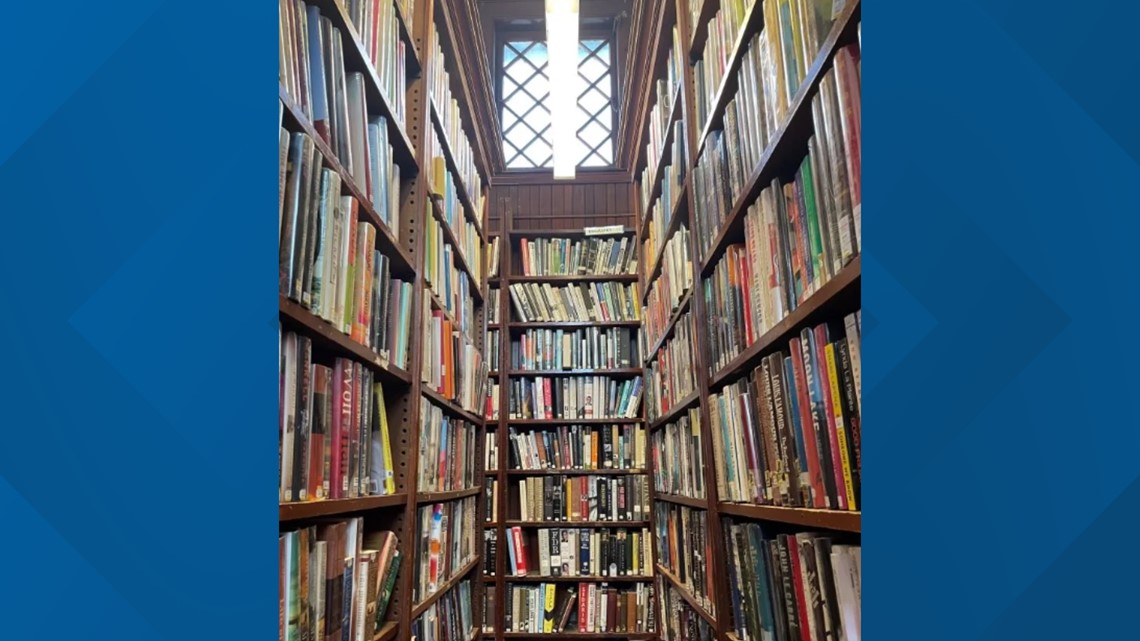
Many libraries in the region have taken this community model to heart, thinking creatively about how their buildings can serve different needs.
The 1893 Calais Library was able to incorporate community space into its expansion in 1988, allowing room for crafts, art shows, home school support and genealogy research.
Steuben’s Henry D. Moore Parish House and Library, which expanded in 2007, pioneered the community space concept.
Built in 1911, the library was designed with the library on the top floor and grand wood-paneled meeting rooms on the first level, where art shows, conferences and concerts are held.
Jeanne Benedict, who has been the library director for 30 years, said these events strengthen the library.
“We encourage people to come upstairs who haven’t typically used the library before,” Benedict said. “Once they come and see what we have to offer, they come back.”
Capital challenges
The region’s libraries are running on limited budgets, largely dependent on fluctuating municipal and private support. And the problem is compounded for libraries in towns with tiny populations.
More than two-thirds of the state’s 255 libraries serve populations under 5,000. All 17 of Washington County’s libraries fall into that pinched category, according to the Maine state librarian, Lori Fisher.
The operating revenue among the county’s libraries in 2022 ranged from $600 for Louise Clements Library in Cutler to nearly $200,000 for Calais Free Library.
The Maine State Library receives roughly $1.5 million annually from a federal library program that pays for a host of statewide services, including the inter-library loan system, braille materials, rural delivery, professional development and consulting. But it cannot be used for capital improvements.

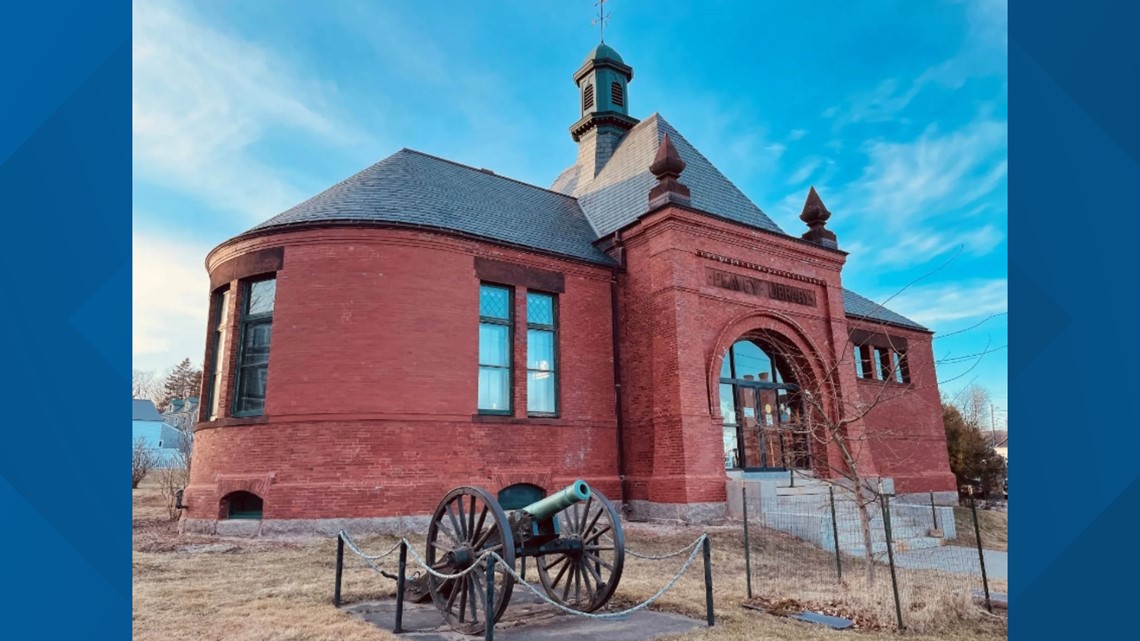
One resource for such initiatives is the Maine Community Foundation’s Community Building Grant Program, and in particular its Belvedere Historic Preservation Fund. Between 2021 and 2023, nine libraries across the state — including Porter Memorial and Peavey Memorial in Washington County — received a total of $125,505 in Belvedere Historic Preservation and Energy Efficiency Library Awards, funding a variety of repairs and building upgrades.
The investments are critical for historic libraries, said Calame, the architectural historian, noting that he fears support for such buildings is dwindling across the country.
“What is perhaps more worrying and potentially tragic is that we might have lost our appetite for the values and underlying notions that lent meaning to those styles,” Calame said. “An embrace of the idea that each member of the democracy has a birthright to all of the intellectual resources of that society.”
Mack, the writer whose arthritis prevented her from entering Porter Memorial Library, returned last fall for the first time in five years. After two successful surgeries, she was finally able to manage the steep stairs and enter — surrounding herself with books again.
The library staff cheered.
“There’s something reverent about being in the library,” Mack said. “I mean, it’s almost like a church. There’s holy stuff in all these books, and I want to know what it is!”
This story was originally published by The Maine Monitor, a nonprofit and nonpartisan news organization. To get regular coverage from the Monitor, sign up for a free Monitor newsletter here.


